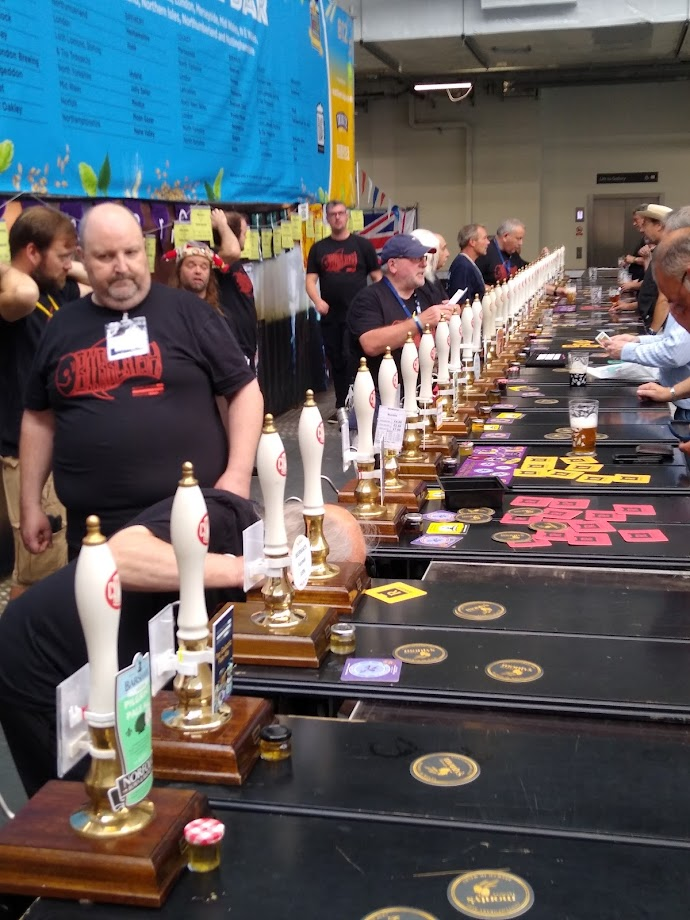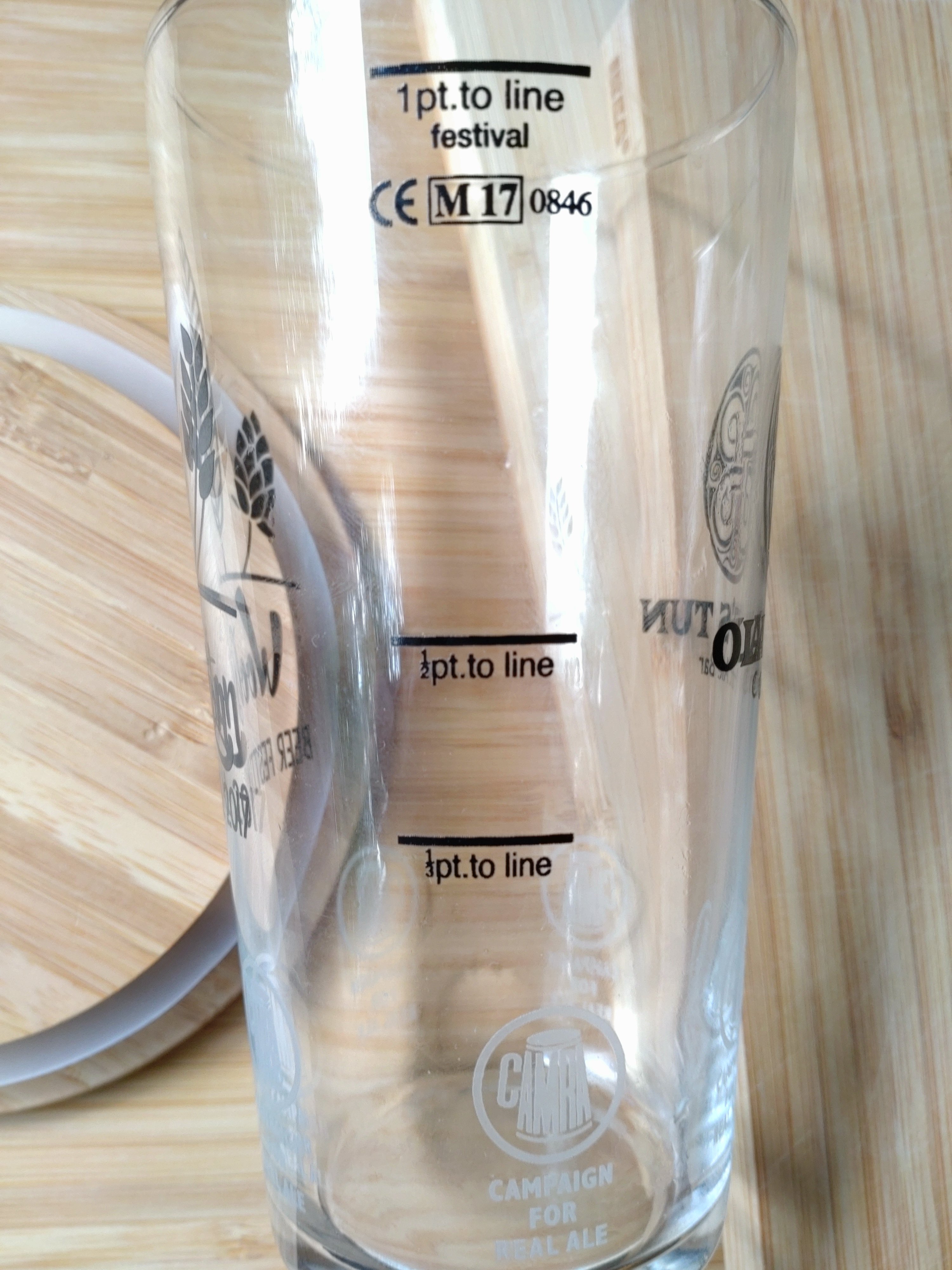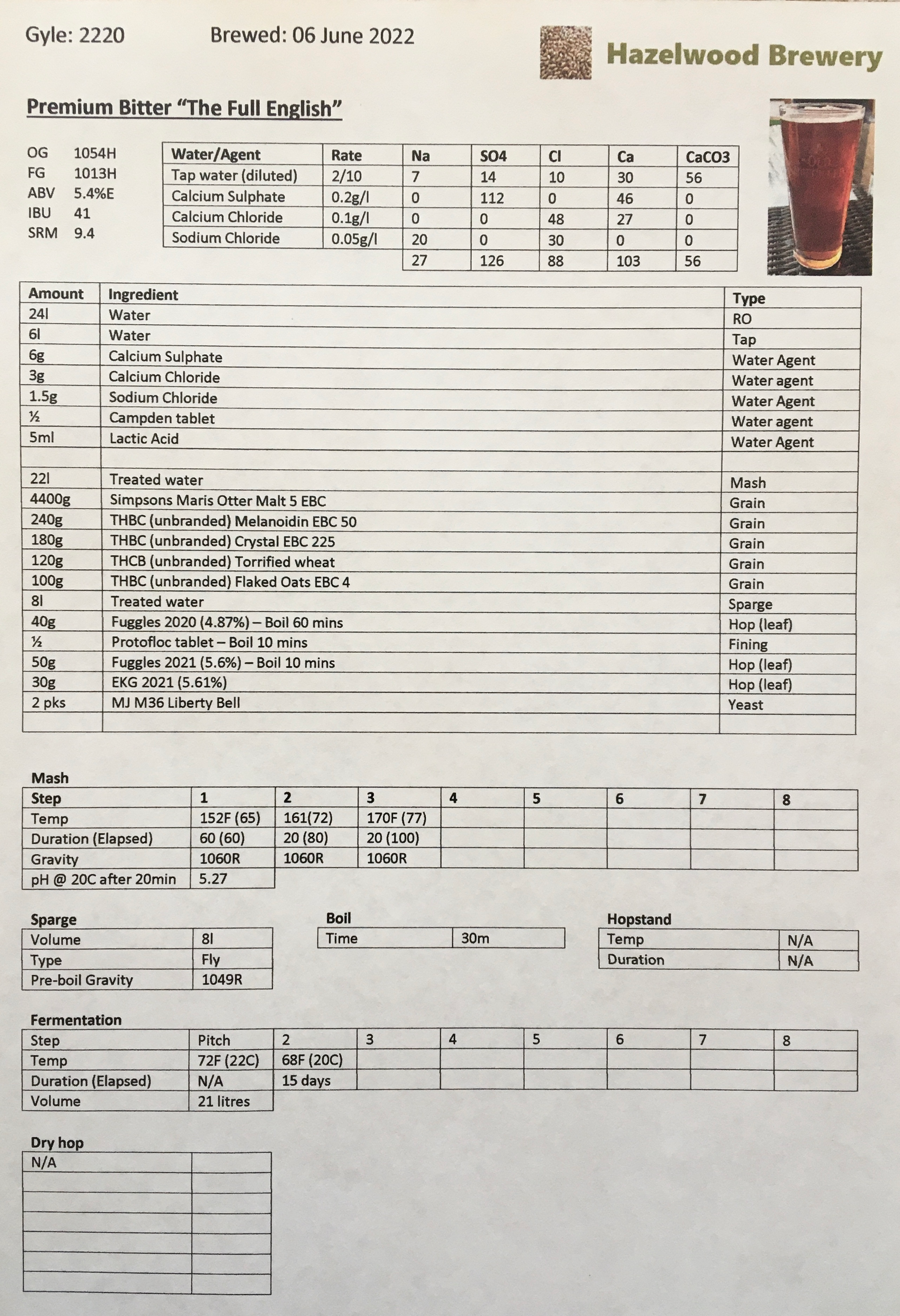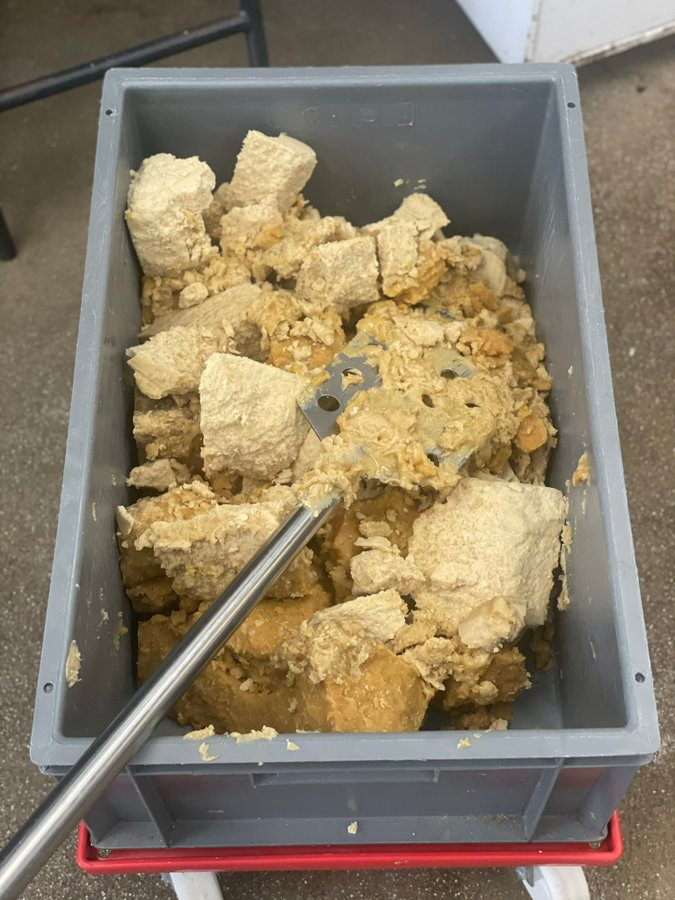Northern_Brewer
British - apparently some US company stole my name
I've looked at some of the Untappds, going back to previous discussions, The Darkness is a mild from Break Rock in Quincy,MA rated at 3.981 and Addison's is a bitter rated at 3.86 from Brato in Brighton,MA - those ratings seem high by the standards of the styles here, I suspect they're benefiting from a bit of rarity value but who knows, they really might be better than just about any mild/bitter from the UK...
Tributary is owned by Tod Mott, one of the greatest American brewers who makes solid traditional styles. Dutchess is up and coming and highly regarded for their traditional styles. Jacks Abby House Lager is in constant rotation in my fridge.
So. Tod Mott deserves the hype, the Lowlands was great, one of my favourite beers of the day. But oh dear, the rest were a bit of a mess. That Break Rock "mild" for instance, drank more like a baby imperial stout, I don't know what the attenuation was - 60%? Anyway, it was nothing like a mild. Same with the Topstone "bitter" from Nod Hill (Ridgefield, CT) - 5.9% is not a "hearty pub-style ale", and the structure was just all wrong, it's like someone's only experience of British bitter was an old bottle of Fuller's ESB mixed with an Amarillo-heavy WCIPA. It was kinda thin, then you had a rush of very "narrow" bitterness, overlain by a clumsy oranginess. It was a total mess.
The Brato Addison's XXtra from Boston was a bit better, at least it wasn't as thin but again it just felt rather uncoordinated. Lost Harbor from Vitamin Sea (Weymouth, MA) also didn't really work - like the Break Rock it was kinda sweet and boozy, and had a wave of oranginess but it all seemed rather disconnected. To be fair, the Gritty McDuff's Best (Maine) was something like right, but Fuggles-y which is less my kind of thing.
Obviously it's a bit unfair as just across the hall you had things like Shere Drop (technically still the Champion Beer of Britain) and the Anspach & Hobday ESB in prime condition on handpull with proper cooling, whereas the US bar was on gravity with cooling jackets that to be honest were struggling to cope with the heat. But at the same time they really showed what was lacking in most of the US efforts - balance. I know I keep going on about it, but balance is perhaps the defining characteristic of British beers, and it's what makes them so drinkable. Mott gets it, and arguably his "American Brown" was a lot more like bitter than some of the beers sold as such.
It's about integrating bitterness and maltiness and yeast character and carbonation and alcohol, and if you push too far in one direction, it really breaks the overall experience. So part of the problem is that USians think that it's OK to "just nudge up a bit" the ABV, or push for a one-note oranginess or whatever, and break the balance. And it doesn't help that their model seems to be Fuller's ESB from a tourist pub in London, which in many ways is something of an outlier. Yes there are beers here that follow that model - but something like Taylor's Landlord would be more representative of huge chunks of the UK. And attenuation here really isn't as low as USians think - even northwest milds which tend to be on the sweet side might typically have apparent attenuation of 79%.
The Airline Scottish Export (Amherst, ME) wasn't my thing - sweet, flabby and not bitter enough for an Export. The Odell 90/- was better but I have to admit I wasn't really paying attention as by that stage I was deep in conversation with some brewers about thiol release. Fair play to CAMRA, they had a thing in their "Discovery Zone" about thiols where you could drink a beer from Wild Beer Co designed to release thiols from malt and mash hops - unfortunately it didn't quite work as they hadn't briefed the staff well enough (eg they implied it had British hops but in fact it was a very Janish-y mash Saaz and Southern Cross etc with 34/70) but I congratulate them for trying.
But there was lots to enjoy - the Stone San Diego Pale was pretty good, and the La Cumbre Project Dank (Albuquerque, NM) did what you'd expect with 100+IBU. But I couldn't walk past things like the Harvey's Imperial stout on cask, or Struise from the wood, and there were some cracking lagers there like unfiltered Uneticke 10 and good old Tipopils.
No CBOB was awarded on the grounds of Covid disruption - which is a bit tenuous if you ask me, they could have made it work if they needed to - so they ran a homebrew competition for the first time to give them something to announce. The prize was brewing it commercially with the main brewpub chain here - I'm sure they will have been delighted to be presented with a 16.1% stout that had been aged for 5 years!!!
https://www.thehomebrewforum.co.uk/threads/great-british-beer-festival.99058/#post-1156478
Obligatory handpull porn :

And the legendary Roger Protz, flanked by Lotte Peplow (BA's ambassador for Europe) and Emma Inch (former British beer writer of the year) at the launch of their latest collab (along with the likes of Pete Brown who is off-shot to the right) which is a pretty decent "best 250 beers" thing (standing up is the CAMRA finance guy who was hosting the launch) :





















































![Craft A Brew - Safale S-04 Dry Yeast - Fermentis - English Ale Dry Yeast - For English and American Ales and Hard Apple Ciders - Ingredients for Home Brewing - Beer Making Supplies - [1 Pack]](https://m.media-amazon.com/images/I/41fVGNh6JfL._SL500_.jpg)







